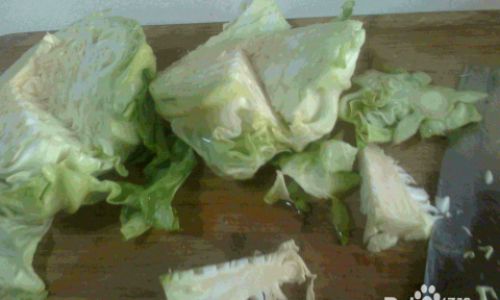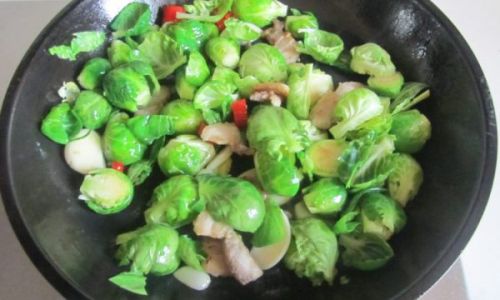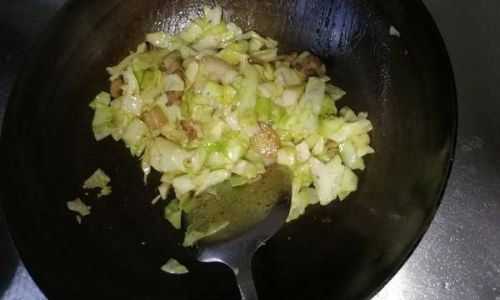Introduction

Stir-fried kale is a delightful and nutritious dish that combines the earthy flavors of kale with the savory notes of various spices and seasonings. This versatile green vegetable is packed with vitamins, minerals, and antioxidants, making it an excellent choice for anyone looking to incorporate more greens into their diet. Whether you’re a seasoned chef or a novice cook, learning how to make stir-fried kale can add a new dimension to your culinary repertoire. In this comprehensive guide, we’ll walk you through every step of the process, from selecting the perfect kale to mastering the stir-fry technique. By the end, you’ll be confident in your ability to create a delicious and healthy stir-fried kale dish that your family and friends will love.
Chapter 1: Understanding Kale
Before diving into the stir-fry process, it’s essential to have a solid understanding of kale itself. Kale is a member of the Brassica family, which includes broccoli, cauliflower, and Brussels sprouts. It has a dark green or purple color and a slightly tough, fibrous texture. The leaves can vary in size and shape, depending on the variety of kale.
1 Types of Kale
There are several types of kale, each with its own unique flavor and texture. Some of the most popular varieties include:
- Curly Kale: This is the most common type of kale, with dark green, curly leaves. It has a slightly bitter flavor and a tough texture.
- Lacinato (Tuscan) Kale: Also known as dinosaur kale, this variety has long, dark green leaves with a blue-green hue and a tender texture.
- Red Russian Kale: This type has red, purple, and green leaves with a sweeter flavor than curly kale.
- Baby Kale: Smaller and more tender than mature kale, baby kale has a sweeter, more delicate flavor.
2 Nutritional Benefits
Kale is a nutritional powerhouse, packed with vitamins and minerals that support overall health. Here are some of the key nutrients found in kale:
- Vitamin A: Important for vision, immune function, and skin health.
- Vitamin C: A powerful antioxidant that helps protect cells from damage.
- Vitamin K: Necessary for bone health and blood clotting.
- Calcium: Essential for bone and teeth strength.
- Iron: Helps transport oxygen in the blood.
- Fiber: Promotes digestive health and aids in weight management.
3 Selecting and Storing Kale
When selecting kale, look for firm, dark green (or purple) leaves with no signs of wilting or yellowing. Avoid kale with brown spots or slimy textures, as this indicates spoilage. Store kale in the refrigerator in a plastic bag or container with a paper towel to absorb excess moisture. It will keep for about 5-7 days.
Chapter 2: Preparing Kale for Stir-Frying
Once you’ve selected your kale, it’s time to prepare it for stir-frying. This involves washing, trimming, and chopping the leaves to ensure they cook evenly and taste their best.

1 Washing Kale
Properly washing kale is crucial to remove dirt, pesticides, and other contaminants. Fill a large bowl with cold water and submerge the kale leaves. Swish them around gently to loosen any dirt. If necessary, repeat the process with fresh water until the kale is clean. Pat the leaves dry with paper towels or use a salad spinner to remove excess water.
2 Trimming and Chopping
Trim the stems from the kale leaves, as they can be tough and fibrous. Depending on the size of the leaves, you can chop them into bite-sized pieces or leave them whole for a more rustic appearance. For curly kale, stack the leaves, roll them into a tight cylinder, and slice them crosswise into thin ribbons. This technique, known as “chiffonade,” will make the kale more tender and easier to eat.
Chapter 3: Stir-Fry Basics
Stir-frying is a quick-cooking method that uses high heat to sear ingredients, locking in flavor and texture. To achieve success with stir-fried kale, it’s important to understand the basics of stir-frying, including the equipment, oil, and cooking techniques involved.
1 Equipment
- Wok or Large Skillet: A wok is traditional for stir-frying, but a large, flat-bottomed skillet can also work well. Look for one with a heavy bottom to distribute heat evenly.
- Spatula or Wooden Spoon: A spatula or wooden spoon is essential for tossing and stirring the ingredients.
- Tongs: Optional but helpful for removing ingredients from the heat quickly.
2 Oil
Choosing the right oil is crucial for stir-frying. You need an oil with a high smoke point, meaning it can withstand high temperatures without smoking or burning. Some good options include:
- Peanut Oil: A popular choice for stir-frying due to its high smoke point and neutral flavor.
- Canola Oil: Another neutral-flavored oil with a high smoke point.
- Vegetable Oil: A blend of oils that typically has a high smoke point.
- Sesame Oil: Adds a nutty flavor but should be used sparingly due to its lower smoke point.
3 Cooking Techniques
- Preheat the Pan: Before adding oil, preheat your wok or skillet over medium-high to high heat. This ensures that the oil reaches the right temperature quickly.
- Add Oil: Pour enough oil to coat the bottom of the pan. It should shimmer but not smoke.
- Add Ingredients: Stir-fry ingredients in small batches to avoid overcrowding the pan. This ensures that they cook evenly and develop a nice sear.
- Stir Constantly: Use a spatula or wooden spoon to toss and stir the ingredients continuously. This prevents them from burning and ensures even cooking.
- Adjust Heat: If the oil starts to smoke or the ingredients are browning too quickly, reduce the heat. Conversely, if the ingredients are cooking too slowly, increase the heat.
Chapter 4: Stir-Fried Kale Recipes

Now that you’ve mastered the basics of stir-frying, it’s time to explore some delicious recipes for stir-fried kale. From simple and savory to spicy and flavorful, these recipes will inspire you to create a variety of dishes.
1 Basic Stir-Fried Kale
Ingredients:
- 1 pound kale, trimmed and chopped
- 2 tablespoons peanut oil
- 2 cloves garlic, minced
- 1 teaspoon ginger, minced
- Salt and pepper to taste
Instructions:
- Heat the peanut oil in a wok or large skillet over medium-high heat.
- Add the garlic and ginger, and stir-fry for about 30 seconds until fragrant.
- Add the kale, and stir-fry for 3-5 minutes until wilted and tender.
- Season with salt and pepper to taste.
- Serve immediately.
2 Garlic and Sesame Stir-Fried Kale
Ingredients:
- 1 pound kale, trimmed and chopped
- 2 tablespoons peanut oil
- 4 cloves garlic, minced
- 1 tablespoon sesame seeds
- 1 tablespoon soy sauce
- 1 teaspoon rice vinegar
- Salt and pepper to taste
Instructions:
- Heat the peanut oil in a wok or large skillet over medium-high heat.
- Add the garlic and stir-fry for about 30 seconds until fragrant.
- Add the kale, and stir-fry for 3-5 minutes until wilted and tender.
- Stir in the sesame seeds, soy sauce, and rice vinegar.
- Season with salt and pepper to taste.
- Serve immediately, garnished with additional sesame seeds if desired.
3 Spicy Stir-Fried Kale with Tofu
Ingredients:
- 1 pound kale, trimmed and chopped
- 1 block (14 ounces) firm tofu, pressed and cubed
- 2 tablespoons peanut oil
- 2 cloves garlic, minced
- 1 teaspoon ginger, minced
- 1-2 teaspoons red pepper flakes (adjust to taste)
- 2 tablespoons soy sauce
- 1 tablespoon hoisin sauce
- 1 tablespoon rice vinegar
- Salt and pepper to taste
Instructions:
- Heat 1 tablespoon of peanut oil in a wok or large skillet over medium-high heat.
- Add the tofu cubes, and stir-fry for about 5-7 minutes until golden brown and crispy. Remove the tofu from the pan and set aside.
- In the same pan, add the remaining tablespoon of peanut oil.
- Add the garlic, ginger, and red pepper flakes, and stir-fry for about 30 seconds until fragrant.
- Add the kale, and stir-fry for 3-5 minutes until wilted and tender.





0 comments